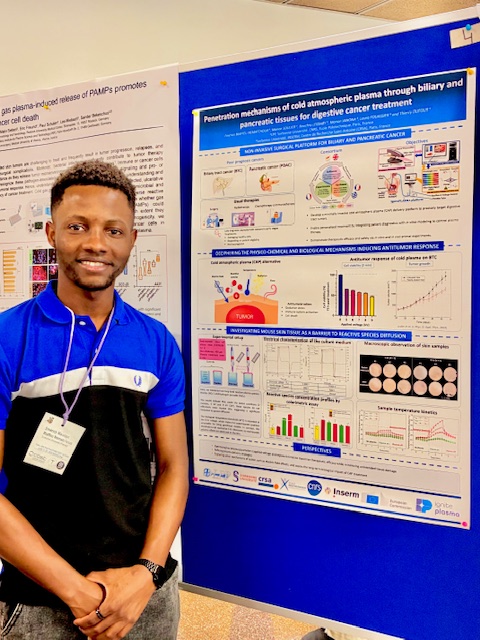Jun 17 – 20 2025 Barcelona, Spain
Ignite Plasma participated in the Plaster Cost Action meeting in June 2025, where our consortium partner Sorbonne University represented our research in cold atmospheric plasma therapy.
Emerick Biaffeu, a team member from Sorbonne University’s Laboratory of Plasma Physics in France, presented his team’s research on behalf of Ignite Plasma, focusing on the therapeutic potential of cold atmospheric plasma (CAP) for treating challenging cancer types.
Research Focus
The presentation outlined CAP as a promising therapeutic approach for patients suffering from cholangiocarcinoma (CCA – cancer of the biliary tract) and pancreatic ductal adenocarcinoma (PDAC) inducing selective cytotoxic effects. These effects can be mediated by different properties of CAP, e.g. reactive oxygen and nitrogen species (RONS) and electric field.
The research has shown CAP’s anti tumor efficacy through tumor growth regression in murine models carrying subcutaneous tumors. However, the team recognizes that in patient situations, epithelial tissue may influence the penetration of plasma-generated species, potentially reducing treatment efficacy.
More information can be found here



